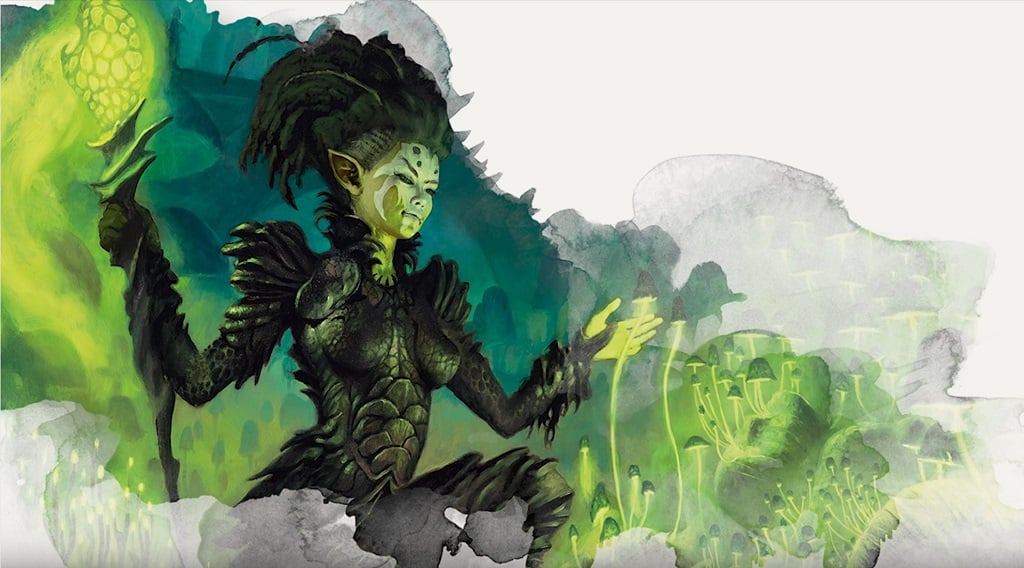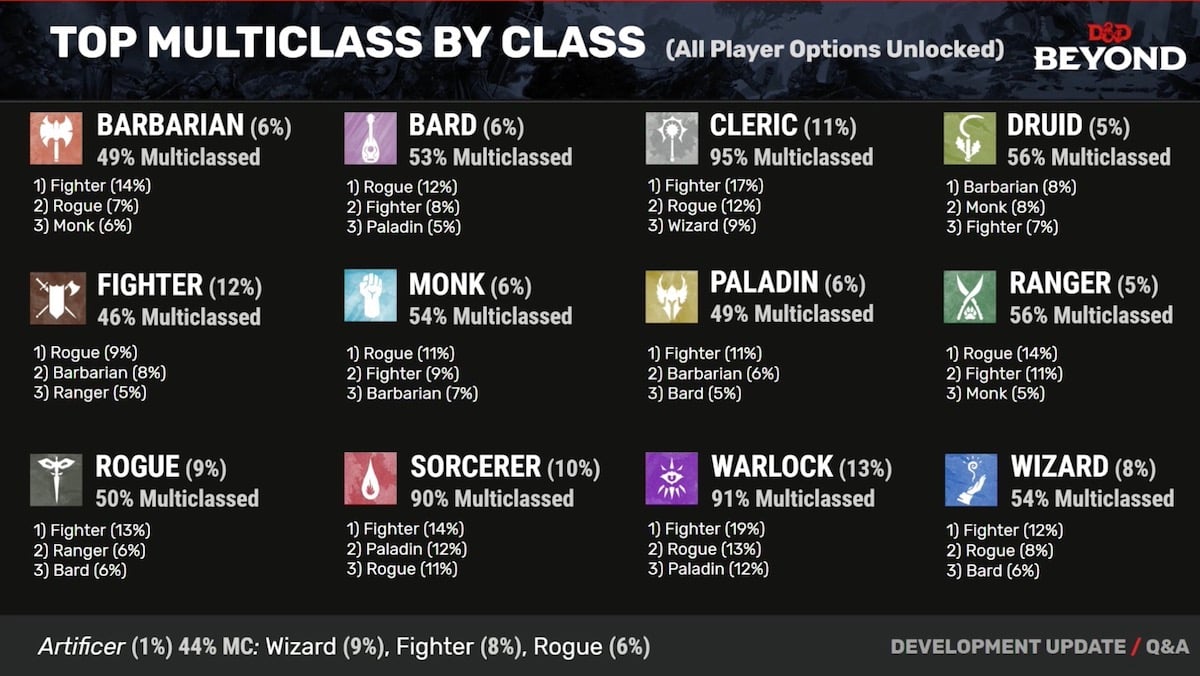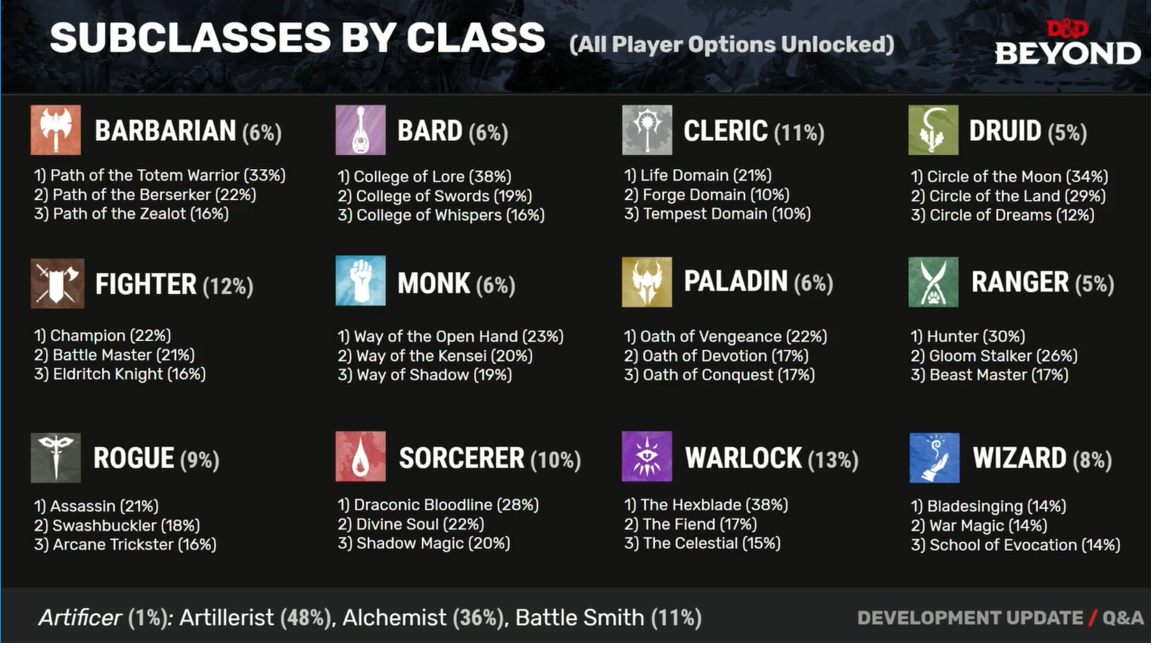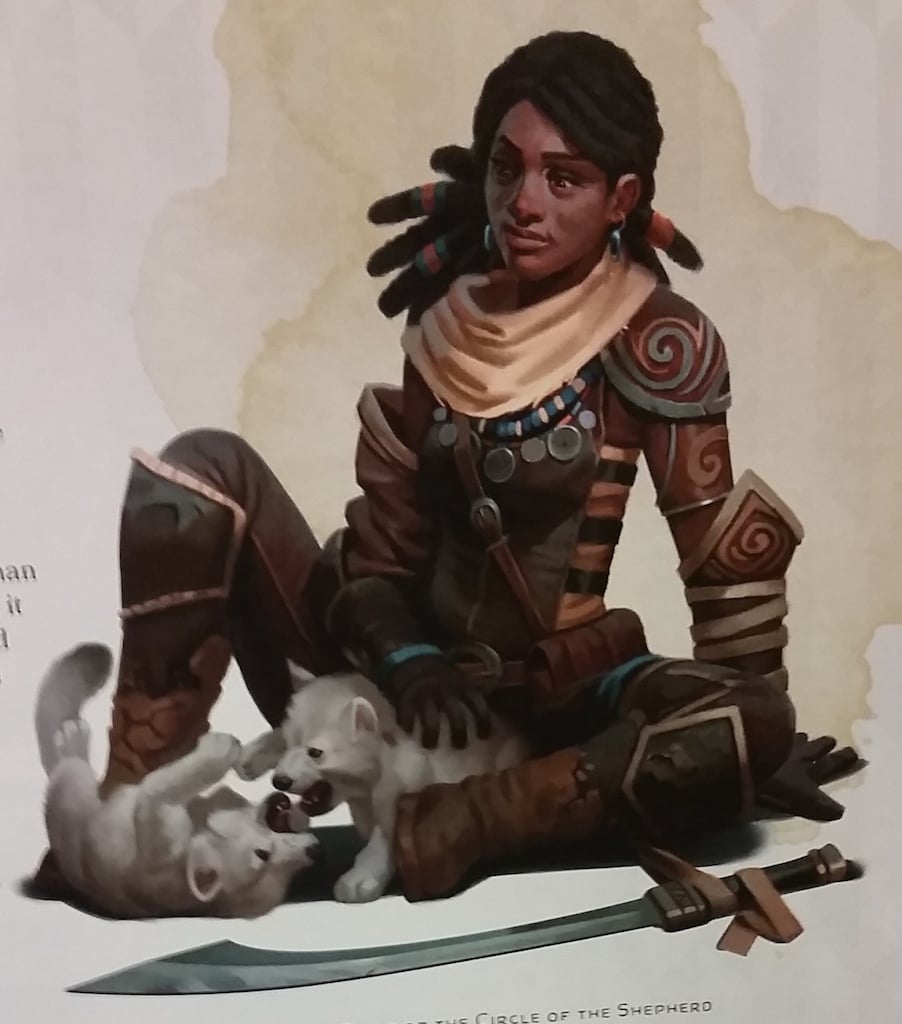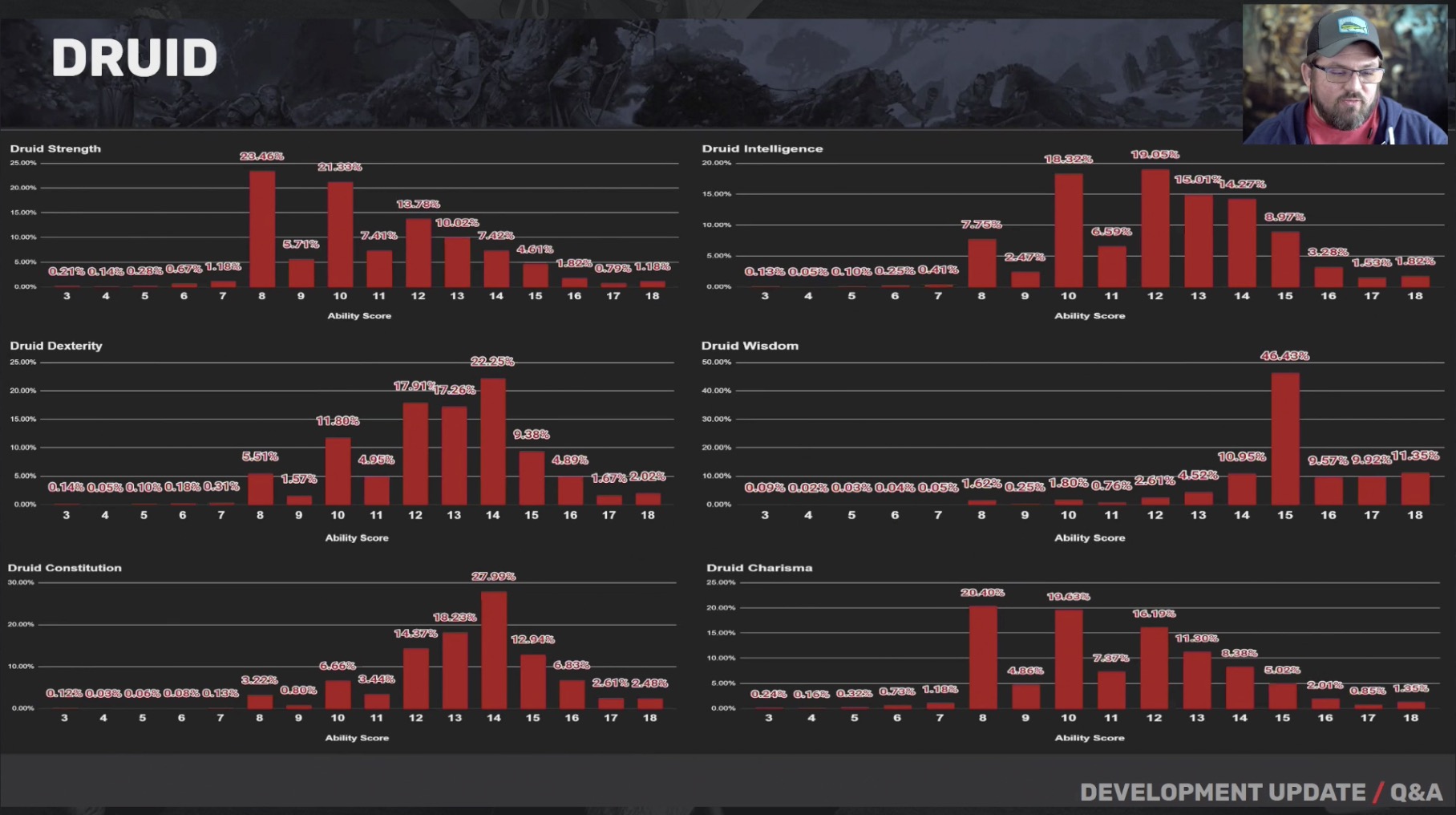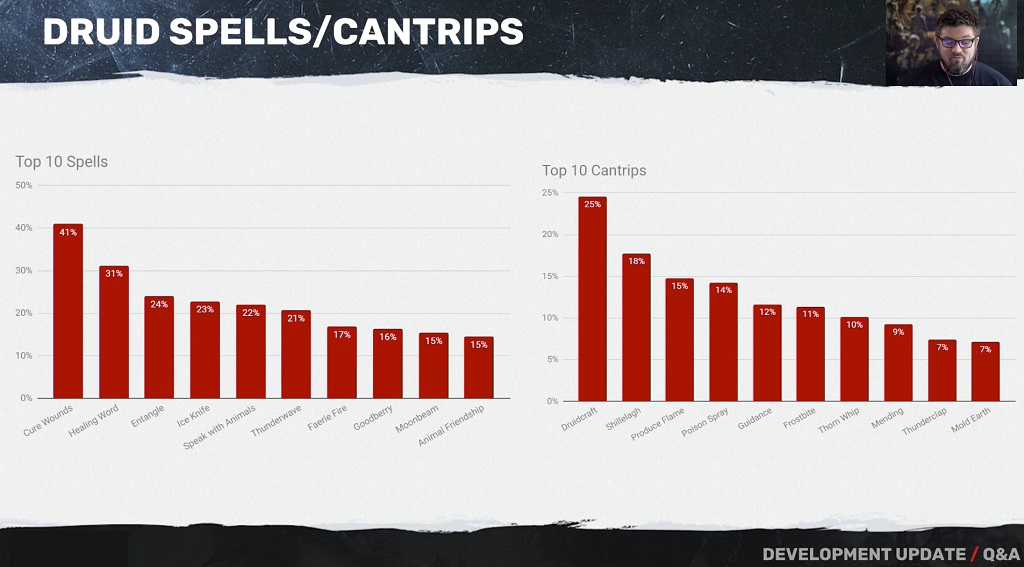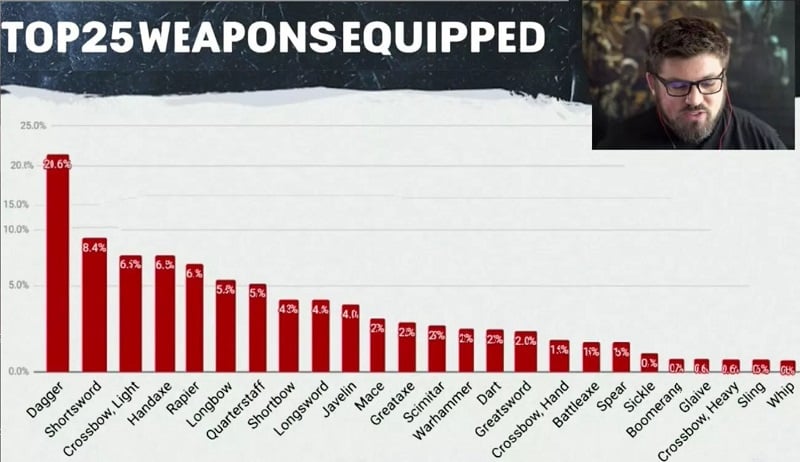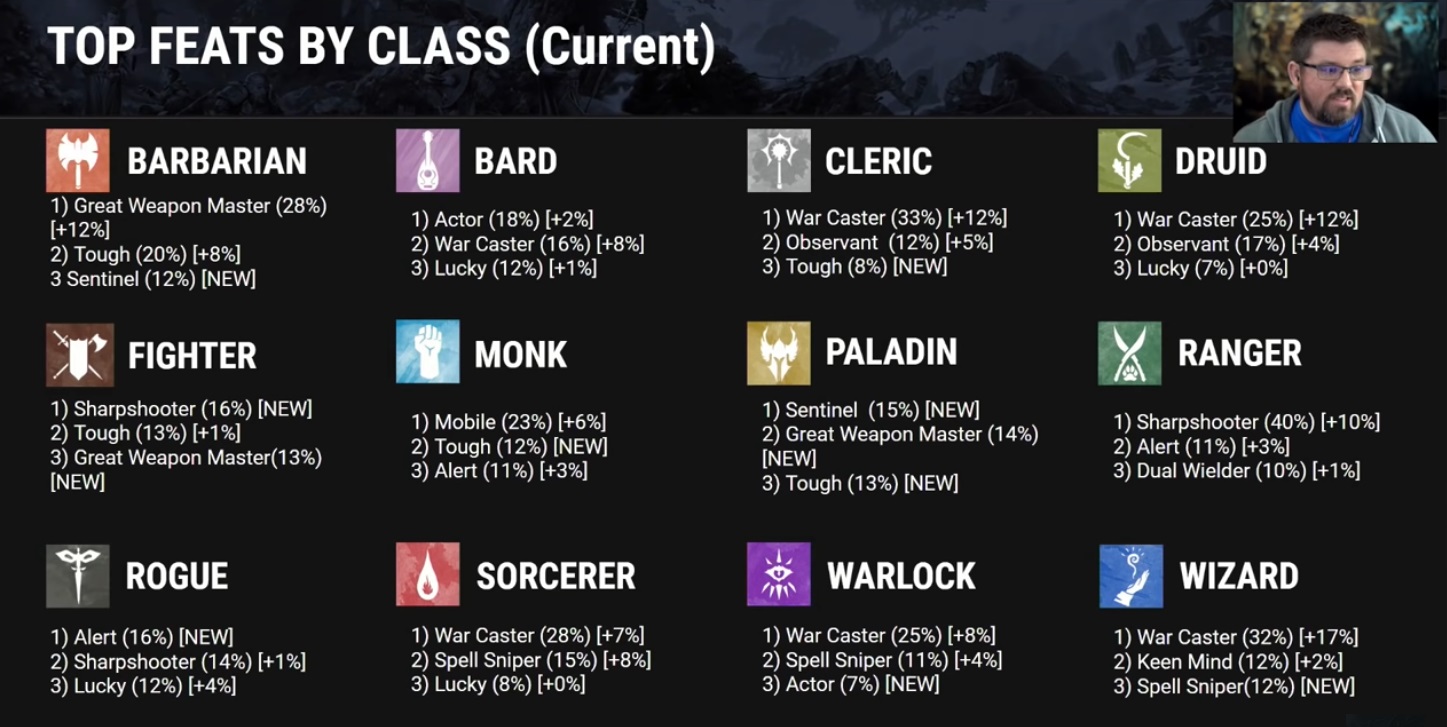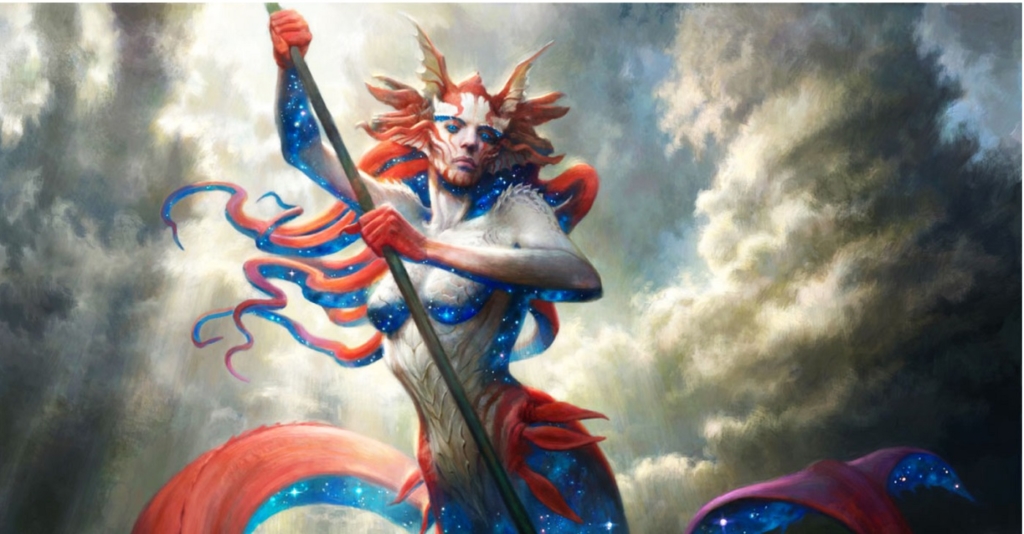D&D By The Numbers – The Druid Supreme
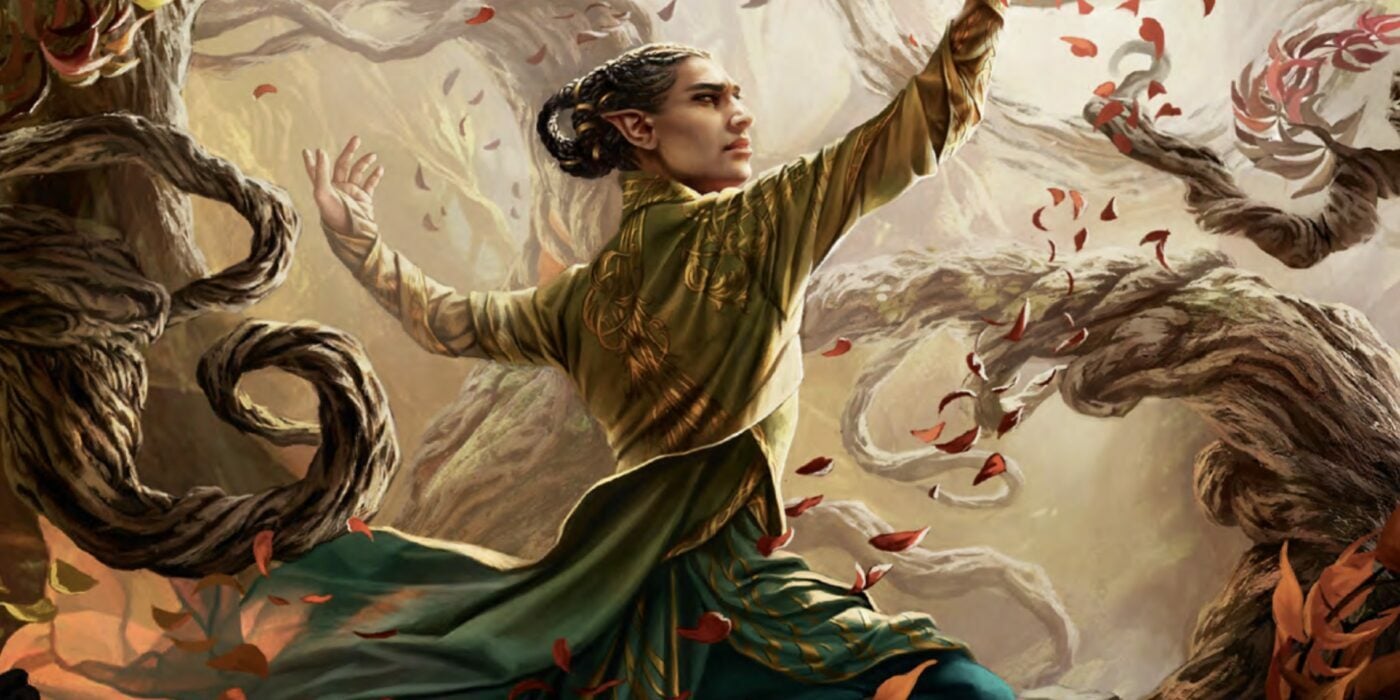
Druids are wild. With enough spell slots to summon a small army and a class feature powerful enough to ruin encounters, they’re almost… perfect.
Druids are nature’s candy, don’t you know. These all natural, locally sourced spell casters are more than capable of bringing their homegrown magic to just about any avenue. And with a class feature that makes many of them all but un-bear-able, you can see why Druids fit a unique niche in the D&D canon. And today we’re going to take a look at just how unique Druids are, by running the numbers to see what most people agree on and build the best possible Druid. We can only run the numbers though.
You’ll have to make them all add up.
First things first, let’s take a look at what kind of Monks are the most popular ones out there:
As with most classes, Druids tend to be multiclassed. Which is an interesting surprise, considering how powerful their class is the closer you stick to it. But, from the look of things, more than half of all Druids are multiclassed, and if you’re a typical Druid you’re either a Barbarian or a Monk. And while they’re not as likely to be multiclassed as, say, a sorcerer, it’s more likely than not that the average Druid multiclasses, and it’s not hard to see why. Barbarian and Monk both have something to offer our perfect Druid, especially since they’re likely to belong to the Circle of the Moon.
Looking at the numbers, Circle of the Moon leads, but only by a little. Close behind is the magical Circle of the Land followed at a distant 3rd by the fae-driven Circle of Dreams. However, Circle of the Moon does beat everyone out, which brings the Barbarian and Monk into closer view. A Druid/Barbarian is going to have access to Barbarian Rage as well as resistance and bonus damage on attacks–while a Druid/Monk is going to benefit from the monk’s unarmored defense and fighting with martial arts weapons, a bonus that includes the claws of any bear you happen to be wild shaped into.
Now that we have our subclass and our secondary class, it’s time to make our Druid stand out. The first way we’re going to do that is by taking a look at the spread of starting stats. It’s pretty straightforward.
Our Druid most likely has a Wisdom of 15, a Con of 14, a Dex of 13, an Int of 12, a Charisma of 10, and a Str of 8. Though there’s a room for some variation in there. While a few of the numbers stand out, it looks like by and large it’s about making sure your spellcasting is where you need it to be and maximizing Wild Shape. Speaking of spellcasting, we’d better pick which spells we know. Time to check out our list of chart-toppers.
Predictably, Cure Wounds and Healing Word are at the top of this iceberg, followed up with Entangle at a distant third. Most of the rest of the spells are utility spells, which really does signify to me that healing is overrepresented. After all you can do better just by dealing more damage or making more attacks. But we’ll leave that aside for now, pick up Druidcraft, Shillelagh, Produce Flame, and Poison round out our cantrip ,and these will be doing most of the work of our character.
Now all we have left to do is pick out gear. Though that’s an interesting one to run, considering that Druids are forbidden from using metal armor but they can wear hide and leather as much as they see fit.
So, dagger and leather armor it is. Let’s instead check out what kind of feats we might take with our new forest friend,,,
War Caster, it seems like, is key. That makes sense, since Druids will want to be able to cast their spells on the rare occasion that being turned into a bear isn’t the right answer. And there you have it, the perfect Druid.
Happy Adventuring!

